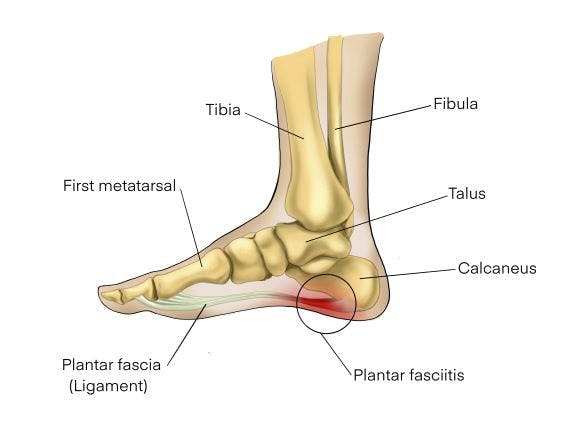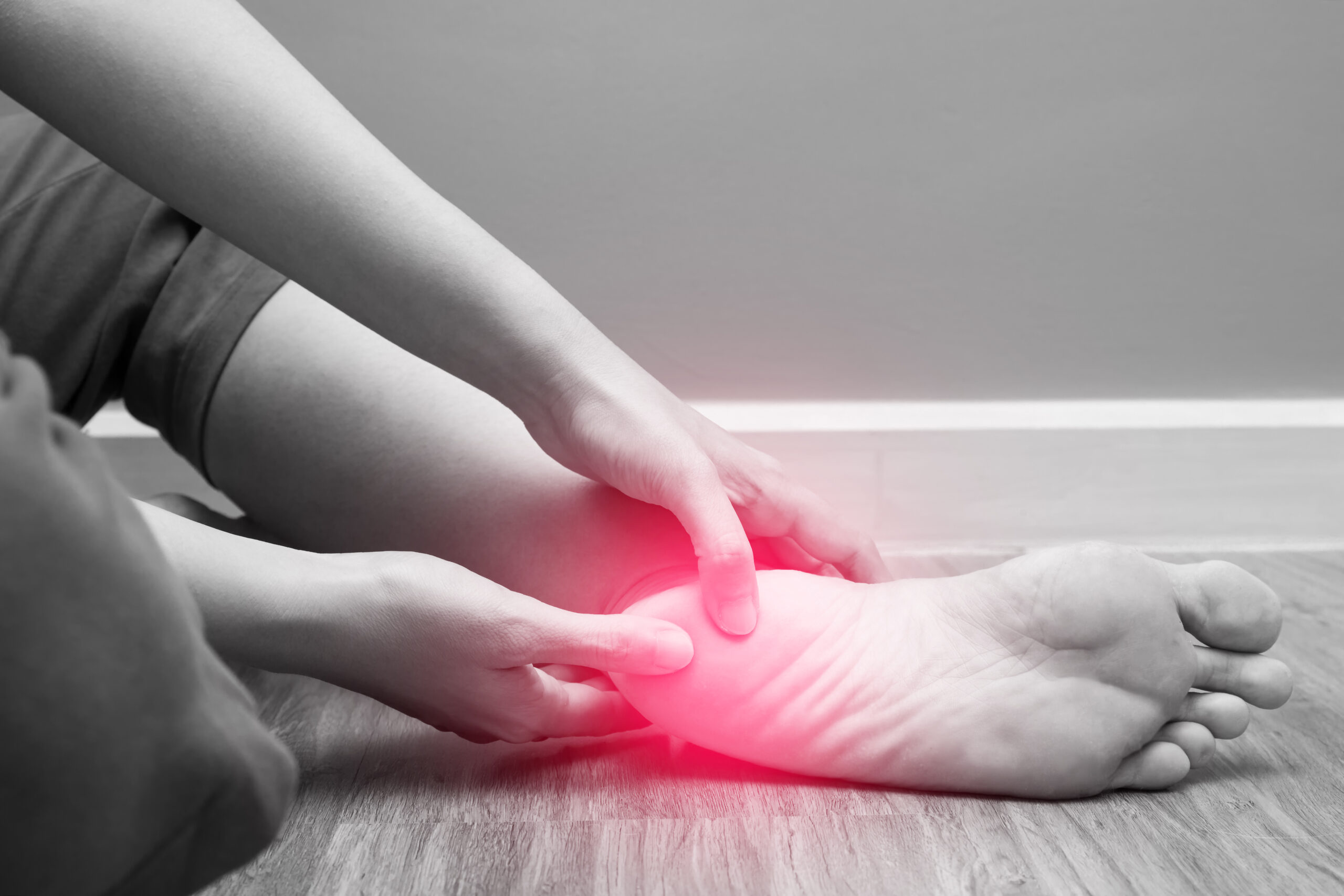Do you have heel pain when first getting out of bed in the morning? You may be suffering from plantar fasciitis.
Plantar fasciitis is the most common cause of heel pain in athletes and older adults. It is caused by degenerative changes in the plantar fascia of your foot. Your plantar fascia is a thick band of ligaments that supports your arch. The most common symptom is heel pain during your first few steps of walking. Plantar fasciitis affects 10% of the population at some time in their life.
Plantar fasciitis stretches are effective at reducing your pain. This article will show you 3 simple stretches that help.

Weakness of your lower leg and foot muscles contributes to this condition. However, research has found inconsistent results when treatment includes strengthening exercises only. Plantar fascia stretches are more useful for helping people with heel pain. The remainder of this article shows how you can alleviate pain from plantar fasciitis through regular stretching.
Plantar Fasciitis Stretches
A 2016 study from Brazil compared the effects of 3 different treatment approaches. One group performed stretching exercises alone. Another group performed stretching plus strengthening exercises for the foot. The third group performed stretching plus strengthening for the foot and hips.
All 3 groups showed significant improvements in pain and function after 8 weeks of treatment. However, there were no differences between the groups. This suggests adding strengthening exercises to a program of stretches confers no additional benefit. Therefore, you will see the most improvements with regular stretching of your plantar fascia and calf.
Seated Plantar Fascia Stretch
Perform this exercise first thing in the morning before stepping out of your bed.
Sit on the side of your bed with your leg crossed over the other. Grasp your heel with one hand. Grasp the toes with your other hand. Pull your toes back towards the top of your foot until you feel a mild to moderate stretch in the bottom of your foot. Hold this stretch for 30 seconds and perform 3 repetitions.
Calf Muscle Stretch
Your plantar fascia is continuous with your Achilles tendon and calf muscle. Therefore stretching is directed toward both of these areas.
Stand with your affected foot back. Your heel remains in contact with the floor. Lean towards a wall or counter. Keep your knee straight to stretch the larger gastrocnemius muscle. Slightly bend your knee to stretch the deeper soleus muscle. Stretch both muscles. Hold each stretch for 30 seconds and perform 3 repetitions.
High-Load Heel Raises
This exercise is a hybrid stretching and strengthening exercise. It utilizes the higher loads of your body weight to stretch your plantar fascia. It also provides a stimulus for the tissue to become stronger. This exercise is more effective if you have been experiencing heel pain for 3 months or longer. Finally, expect some pain initially when performing this exercise.
Stand with both feet on a step with your heels hanging off the edge. Place a small towel roll under your toes. Rise onto both toes over approximately 3 seconds. Remove your unaffected foot from the step once at the top of the movement. Hold this position for 2 seconds. Slowly lower your affected heel over approximately 3 seconds. Place your unaffected foot back on the step and repeat the sequence.
Perform 3 sets of 12 repetitions every other day. Progress the exercise by incorporating a backpack with weights.
See Your Physical Therapist for More Help with Plantar Fasciitis
It is common for plantar fasciitis to last up to 1 year. Performing regular plantar fascia stretches will alleviate pain and speed up your recovery. If you are experiencing heel pain, start with these 3 stretches. Perform the first 2 daily, and the high-load heel raises every other day.
Your physical therapist will design an individualized exercise program tailored to your needs. Manual therapy provided by your physical therapist also speeds up recovery. Give us a call and schedule an initial evaluation with your physical therapist.

